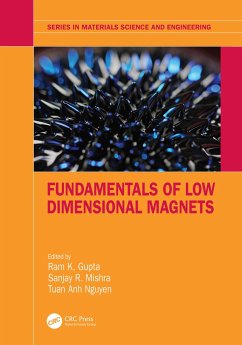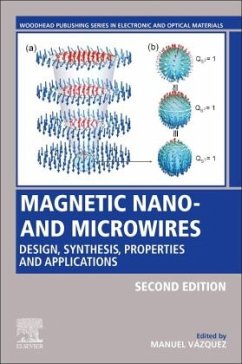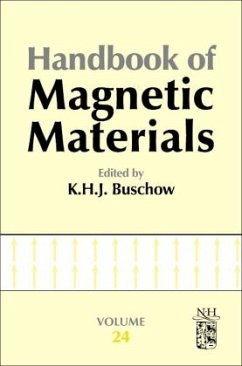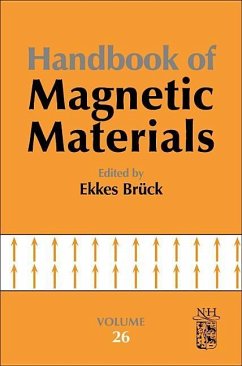
Magnetic Nano- And Microwires
Design, Synthesis, Properties and Applications
Herausgegeben: Vázquez, Manuel

PAYBACK Punkte
114 °P sammeln!
Magnetic nanowires and microwires are key tools in the development ofenhanced devices for information technology (memory and data processing) andsensing. Offering the combined characteristics of high density, high speed, andnon-volatility, they facilitate reliable control of the motion of magnetic domainwalls; a key requirement for the development of novel classes of logic and storagedevices.Part One introduces the design and synthesis of magnetic nanowires andmicrowires, reviewing the growth and processing of nanowires and nanowireheterostructures using such methods as sol-gel and electrodepo...
Magnetic nanowires and microwires are key tools in the development of
enhanced devices for information technology (memory and data processing) and
sensing. Offering the combined characteristics of high density, high speed, and
non-volatility, they facilitate reliable control of the motion of magnetic domain
walls; a key requirement for the development of novel classes of logic and storage
devices.
Part One introduces the design and synthesis of magnetic nanowires and
microwires, reviewing the growth and processing of nanowires and nanowire
heterostructures using such methods as sol-gel and electrodeposition
combinations, focused-electron/ion-beam-induced deposition, chemical
vapour transport, quenching and drawing and magnetic interactions. Magnetic
and transport properties, alongside domain walls, in nano- and microwires
are then explored in Part Two, before Part Three goes on to explore a wide
range of applications for magnetic nano- and microwire devices, including
memory, microwave and electrochemical applications, in addition to thermal
spin polarization and configuration, magnetocalorific effects and Bloch point
dynamics.
enhanced devices for information technology (memory and data processing) and
sensing. Offering the combined characteristics of high density, high speed, and
non-volatility, they facilitate reliable control of the motion of magnetic domain
walls; a key requirement for the development of novel classes of logic and storage
devices.
Part One introduces the design and synthesis of magnetic nanowires and
microwires, reviewing the growth and processing of nanowires and nanowire
heterostructures using such methods as sol-gel and electrodeposition
combinations, focused-electron/ion-beam-induced deposition, chemical
vapour transport, quenching and drawing and magnetic interactions. Magnetic
and transport properties, alongside domain walls, in nano- and microwires
are then explored in Part Two, before Part Three goes on to explore a wide
range of applications for magnetic nano- and microwire devices, including
memory, microwave and electrochemical applications, in addition to thermal
spin polarization and configuration, magnetocalorific effects and Bloch point
dynamics.













